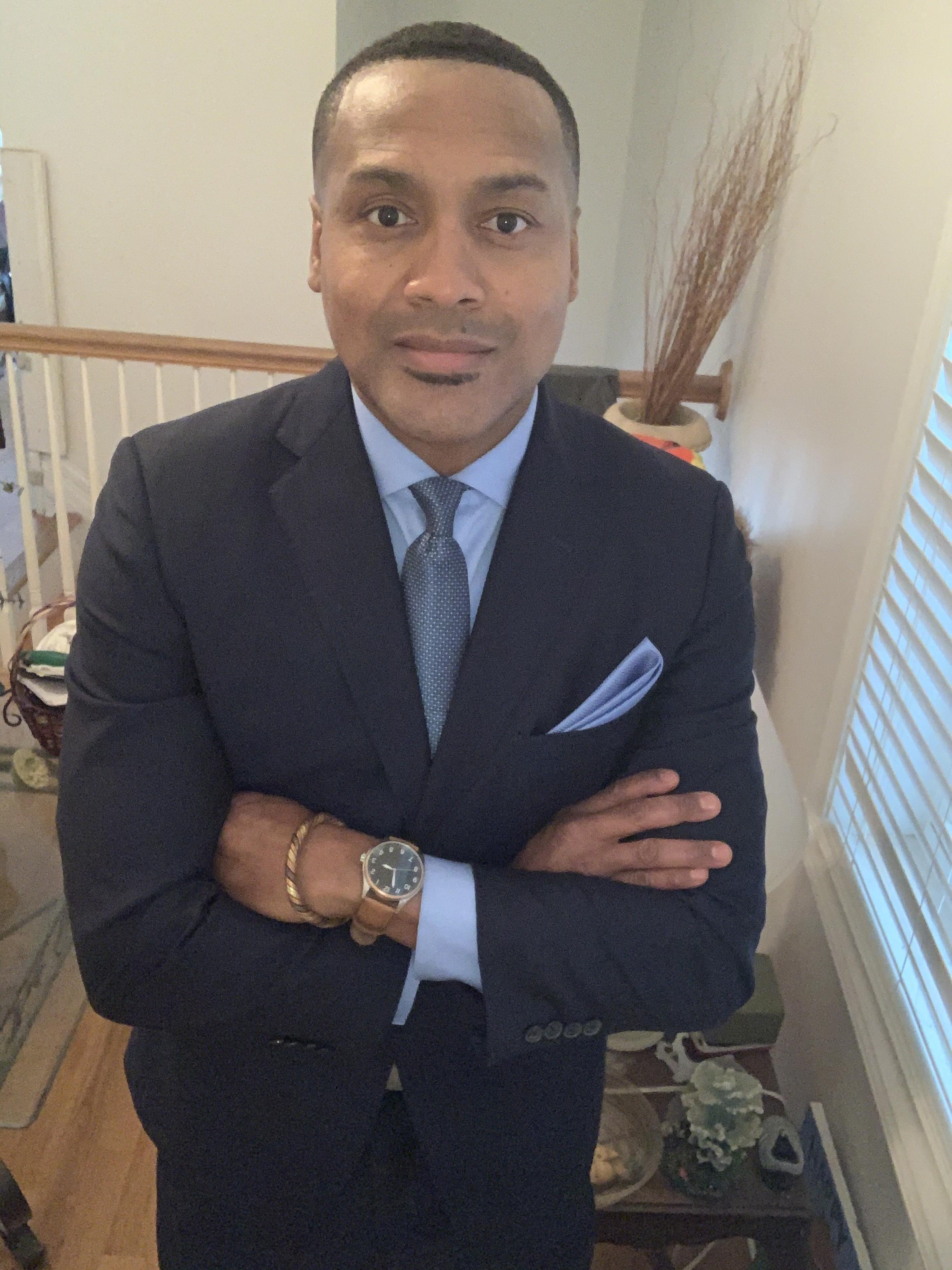Fresh Start Academy, located within Sumner High School in the historic Ville section of Northern St. Louis, is an alternative school that removes as many barriers as possible to gaining the academic and life skills needed to meet the state’s graduation requirements. A great many students come from disadvantaged situations, but they attend a school with a staff that is devoted to resurrecting the cultural heritage of an old community.
“I have to recruit teachers with a developing and progressive mindset, not necessarily a traditional mindset,” said Sean Nichols, principal of both Fresh Start and Sumner, and a member of Administrators Association of the St. Louis Public Schools, AFSA Local 44. “Our teachers have to be prepared for change all the time. We have to keep our students interested and try to get them to graduate.”
Sean is a veteran principal who led other programs for high school dropouts for nearly 10 years before he was recruited to take over Fresh Start from its founders. However, he left the school in 2011 for eight years to create a K–8 school in another area of the city. Fresh Start held no surprises, although the intense shock of an international pandemic lurked in the wings. From his earliest days at Fresh Start, Sean knew how to recruit faculty and attract community, university and political partners, all while keeping his eyes on the more traditional population of Sumner High School.
“We’ve had some gang disputes in our neighborhood,” he said, “and a few students may drop out of school for fear of retaliation, so I try to create some online opportunities for them to be successful. I’m continuing a lot of that, even now, so students can prepare. And some do.”
Quite a few ultimately take the ACT, and Nichols is noticeably proud of that. “Some of them…if they came to school after being involved in conflict in the community, they would be scared of who they could encounter on school grounds. ‘Oh, hey, it’s you.’ They could get seriously hurt.”
“Our community is very historic,” he went on. “The Ville is the oldest African American community west of the Mississippi River. It is one of the challenging communities in Northern St. Louis, and yet it is not as tough as some think it is. That’s because this community once had a middle class. It was a thriving community at one time, but the population has moved to the suburbs like in many cities. Some of that middle-class attitude remains. Other parts of St. Louis don’t have that memory.”
In the 1920s and ’30s, The Ville was home to prosperous African Americans, some of whom had lived there as early as the 1870s. It was the site of Sumner High School, the first secondary school for Black people west of the Mississippi River; Harriet Beecher Stowe College, one of the earliest Black teacher education institutions; and Homer G. Phillips Hospital, one of the few Black teaching colleges in the country. It produced such celebrities as opera luminary Grace Bumbry, tennis great Arthur Ashe, Rock ’n’ Roll Hall of Famer Chuck Berry, legendary singer Tina Turner, and the first Black four-star general in the U.S. Army, Roscoe Robinson Jr. Through the 1950s, The Ville was the cradle of African American cultural life for St. Louis.
Sean Nichols is not a St. Louis native. Raised in central Mississippi in a family of six children, he earned his Bachelor of Arts in economics at Tougaloo College, a historically black college (HBCU) in Jackson, Mississippi. He dreamed of becoming a stockbroker, striking it rich and impressing people.
“It was selfish,” he said. “I think a lot of people are like that when they’re very young. But I was bored by it. As a senior in college, I realized I wanted to push my thinking and help young people be successful. Money slipped away as a motivation. I didn’t like that person anymore.”
With that revelation, Nichols headed off to another HBCU, Harris-Stowe State University in St. Louis, where he earned his second bachelor’s degree, this one in social studies and education. He began his education career by teaching high school social studies for nine years; while teaching, he earned degrees and credentials all the way through to a Doctor of Education in administration from the University of Missouri at St. Louis, and an urban superintendent certification from Howard University.
“All the civil rights activists and advocates who fought for the lives of others have influenced me,” he said. “Richard Wright, Dr. King, Fannie Lou Hamer, Malcolm X, Ella Baker, W.E.B. Dubois.”
Culturally responsive education became his passion. In 2010, he founded the first public culturally responsive school in the district, the Bertha Knox Gilkey Pamoja Preparatory Academy, for grades pre-K to 8, named after a community organizer who became known nationally for fighting for tenants’ rights and public housing improvements.
At the greater Sumner High School, in which the Fresh Start Academy began, Sean has embraced the same culturally responsive zeitgeist since 2018.
“We’re bringing light back into this community, opening up the school to resurrect the thriving spirit of young African Americans who graduated from here,” he said. In addition to Bumbry, Ashe, Berry, Turner and Robinson, graduates include Tuskegee Airman George W. Hickman Jr., comedian Dick Gregory and musician Bobby McFerrin, plus a long line of distinguished educators, attorneys and elected officials. “That preservation of our culture is monumental in this community. If you don’t know where you’ve been, you’re not going to know where you’re going.”
The school’s momentum—like that of educational institutions nationwide—was severely challenged in 2020 when COVID-19 was unleashed.
“These were unchartered waters,” he said. “Some days you felt incompetent because you can’t possibly know the answers. You had to develop an innovative mindset.”
There was a sudden shift to total online instruction.
“This stopped us from building relationships we need with children,” Sean said, echoing principals all over the country. “Many didn’t attend. Many who did couldn’t turn on their cameras because of their home conditions. Overall, it wasn’t good for students from my community.”
The administration and staff mobilized, often partnering with churches, to establish a meal center in the school and deliver meals to families. Home visits, which ended at the doorstep, were common. “There was a lot of death,” he said, but he and his staff put their full energy into their families 24/7.
Some families were devastated. The travails of one senior stayed with Nichols. When he would drop schoolwork off at her front door in the afternoon, she often was still sleeping, but he always circled back in his car and attempted to pick up whatever she had managed to do. She did not graduate this year.
Dr. Sean Nichols’ school was as effective as it could be under desperate circumstances, and he found AFSA Local 44 was helpful.
Today, almost all his students have returned to the building. While enforcing mask mandates and such, Sean and his staff are trying to foster technology skills, provide as much tutoring as possible, think differently, adjust expectations and, above all, rebuild culture.

